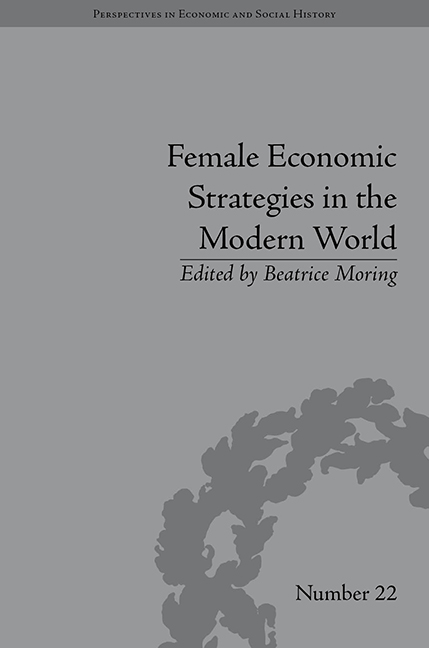Book contents
- Frontmatter
- Contents
- List of Contributors
- List of Tables
- Introduction
- 1 Widows, Family and Poor Relief in England from the Sixteenth to the Twentieth Century
- 2 Survival Strategies of Poor Women in Two Localities in Guipuzcoa (Northern Spain) in the Nineteenth and Twentieth Centuries
- 3 Women, Work and Survival Strategies in Urban Northern Europe before the First World War
- 4 Women, Households and Independence under the Old English Poor Laws
- 5 The Economic Strategies of Widows in Switzerland from the mid-Nineteenth to the mid-Twentieth Century
- 6 Mexico: Women and Poverty (1994–2004): Progresa-Oportunidades Conditional Cash Transfer Programme
- 7 Gender and Migration in the Pyrenees in the Nineteenth Century: Gender-Differentiated Patterns and Destinies
- 8 Women and Property in Eighteenth-Century Austria: Separate Property, Usufruct and Ownership in Different Family Configurations
- Notes
- Index
3 - Women, Work and Survival Strategies in Urban Northern Europe before the First World War
- Frontmatter
- Contents
- List of Contributors
- List of Tables
- Introduction
- 1 Widows, Family and Poor Relief in England from the Sixteenth to the Twentieth Century
- 2 Survival Strategies of Poor Women in Two Localities in Guipuzcoa (Northern Spain) in the Nineteenth and Twentieth Centuries
- 3 Women, Work and Survival Strategies in Urban Northern Europe before the First World War
- 4 Women, Households and Independence under the Old English Poor Laws
- 5 The Economic Strategies of Widows in Switzerland from the mid-Nineteenth to the mid-Twentieth Century
- 6 Mexico: Women and Poverty (1994–2004): Progresa-Oportunidades Conditional Cash Transfer Programme
- 7 Gender and Migration in the Pyrenees in the Nineteenth Century: Gender-Differentiated Patterns and Destinies
- 8 Women and Property in Eighteenth-Century Austria: Separate Property, Usufruct and Ownership in Different Family Configurations
- Notes
- Index
Summary
It is not unusual to come across the statement that women in the past were economically dependent on men. Men have been seen as producers while women and children have been defined as consumers. Therefore a widow or abandoned wife would logically be a person totally dependent on charity and poor relief. Irrespective of if women were the victims of patriarchal society and could not work, or women devoted themselves to the welfare of their family and would not work, the outcome would be the same. Because of lack of property and employment the loss of the breadwinner would spell disaster. While it might be understandable that nineteenth-century middle-class statisticians and census takers held such views, in retrospect they cannot be accepted without reservation. Jane Humphries has highlighted the issue that female input for communities during the industrialization period has largely been ignored. The acceptance of female dependency as a fact by modern research must be seen as problematical. Richard Wall has also demonstrated that the viewing poor relief as a sole income source for widows and other female household heads in nineteenth-century society is totally inaccurate.
Ignored, unrecorded and invisible is how Hill described the economic input of women in the eighteenth and early nineteenth century. The situation did not necessarily improve over time.
- Type
- Chapter
- Information
- Female Economic Strategies in the Modern World , pp. 45 - 72Publisher: Pickering & ChattoFirst published in: 2014

